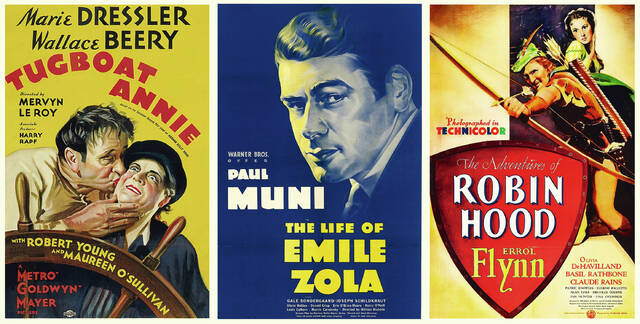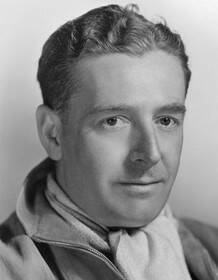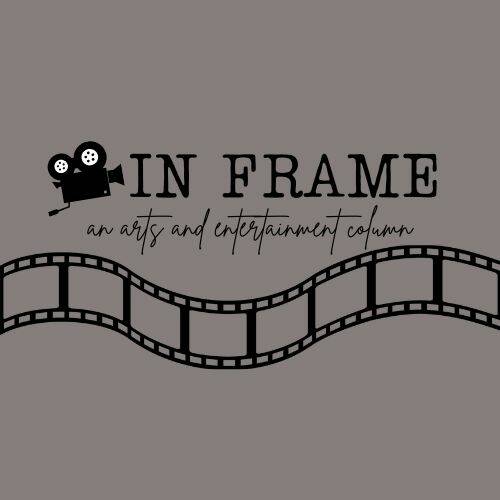
The posters for ‘Tugboat Annie,’ ‘The Life of Emile Zola,’ and ‘The Adventures of Robin Hood’ are shown. Each of these films were co-written by Norman Reilly Raine, a native of Wilkes-Barre.
Public Domain
It’s about time we talk about Norman Reilly Raine, the quiet member of the Luzerne County Oscar winners’ club. Unlike Jack Palance and the Mankiewicz brothers, you don’t hear much conversation about Mr. Raine, who won his Oscar for best adapted screenplay for 1937’s “The Life of Emile Zola” — which also won best picture.
Raine was born in Wilkes-Barre on June 23, 1894, on Jackson Street. It’s kind of hard to imagine the current-day Jackson Street as a birthplace, but let’s trust the old school newspapers on this. Or, maybe we shouldn’t, because the Times Leader actually has a historically terrible track record when it comes to getting the details of Raine’s life correct. In his obituary in 1971, the paper listed his birth year at 1895, which you won’t see listed on any modern filmmaking source.
There was also a popular theory in Raine’s time that he was born on Ross Street in Ashley, a claim that appears to be dubious. From what I’ve gathered, his mother, Anne Reilly Raine, was from Ashley, but there’s no true record of Norman being born there.
So a baby named Norman Reilly Raine was born in 1894 in Wilkes-Barre, and was quickly taken by his parents to the British Isles, where he spent the majority of his childhood years. I say the majority because, as it turns out, the Raine family actually returned to Wilkes-Barre when Norman was about 12 years old. The family lived on West River Street for a few years, though this fact is also — curiously — disputed.
Let me rephrase, then: For some length of time in the mid-to-late 1900s — perhaps for years — the Raines lived on West River Street in Wilkes-Barre.
In an article written for the Times Leader in the 1930s, Raine was described as being “English-Irish American,” which I only bring up to illustrate the level of confusion that is involved with Raine’s upbringing. All of this hokum may explain why Raine’s legacy in his birth city is so muted.
He departed Wilkes-Barre again to carve out his own professional path. He became a newspaperman, fought in World War I, got married, and eventually ended up as a lecturer at the University of Washington.
‘Tugboat Annie’
While at Washington, Raine came in contact with a pleasant woman who owned and operated a tugboat. The woman and her vessel served as the inspiration for Raine’s most popular creation during his lifetime, “Tugboat Annie,” a series which first appeared in The Saturday Evening Post. From that magazine tale came demand for a film adaptation, and Raine was brought on to bring “Tugboat Annie” to the screen as a credited co-writer.
The film “Tugboat Annie” was released in 1933 with Marie Dressler and Wallace Beery in the lead roles. Dressler and Beery were among MGM’s most popular players at the time, so the film was certainly given the tools to succeed. Hollywood legend Mervyn LeRoy served as director.
Unlike the woman Raine met in Washington, the written character of Tugboat Annie was rather crude. Raine wrote dozens of “Tugboat Annie” stories, and Hollywood liked his work enough to make him a regular on the screenwriting circuit throughout the 1930s and 1940s.
Raine himself was quite comfortable with the industry, and once quipped that Hollywood “is the only place where writers are paid commensurate to their worth.” Well, that sounds lovely.
Two massive hits
It was at Warner Brothers, with whom Raine signed a contract, that our central Wilkes-Barrean made his greatest mark in the filmmaking industry. He scored two massive hits in back-to-back years.
The first hit was the aforementioned “The Life of Emile Zola,” released in 1937 to great critical acclaim. I am … not a fan at all. In my rankings of every best picture winner from earlier this year, I ranked “Emile Zola” as the seventh worst best picture winner ever — 91st (now 92nd) out of 97 (now 98).
In January, when my rankings were first revealed, here’s what I had to say:
“Once described to me as an essential watch for a journalist-to-be, “The Life of Emile Zola” fails to be as bold as that precursor led me to believe. It’s a forgettable effort, and those who remember it more clearly have noted its toothlessness in relation to the real Zola’s work, not to mention the context in which the film was produced. My main takeaway from it these days is that it scored a writing Oscar for Luzerne County’s own Norman Reilly Raine. Paul Muni is strong in the title role, but this is a Best Picture winner you can comfortably skip.”
I don’t disagree with my past self. Other than the Raine connection, there’s really no reason for a modern, local viewer to watch this. However, it’s the film that gave Luzerne County its first Oscar, and, for that, I’m so happy that “The Life of Emile Zola” exists.
More importantly, Raine co-wrote one of the greatest films of Hollywood’s Golden Age in 1938s “The Adventures of Robin Hood,” the real crowning achievement of his career. From the iconic Errol Flynn performance to the gorgeous greens that ooze out of the screen at a time when mainstream colored films were still a novelty, “Robin Hood” is pure movie magic.
What holds the film together is the screenplay from Raine and Seton I. Miller, which blends swashbuckling energy with the progressive moral code that all great “Robin Hood” stories must have. This should have been the Oscar winner!
Coming back home
According to Kay Dangerfield, who wrote a column called “Vignettes of the Valley” in the Times Leader of the 1930s, Raine might have visited Wilkes-Barre in 1933, right around the time when the film “Tugboat Annie” was being released. Side note: Kay Dangerfield is a great name, and I love her writing style. You’re forgiven for all of the Norman Reilly Raine falsehoods you helped spread when newspapers were more like tabloids, Kay. Thank you for your service. This “In Frame” column, unironically, could not have been written without your contributions.
The first confirmed case of Norman Reilly Raine reappearing in Wilkes-Barre actually is in July 1939. He checked into the Hotel Sterling, met up with his aunt, and spent some time with his uncle, the local architect Austin L. Reilly, at Lake Silworth.
I adore Kay Dangerfield’s descriptions of her encounters with Raine in 1939. She said he had a British accent, blue eyes, and red hair. These observations, while being consistent with the tabloid nature of the newspaper, are also critical is knowing who Norman Reilly Raine was. Pictures of him are sparse, and none are in color from what I’ve seen. His physical description and mannerisms would be lost to history without this dated firsthand account.
Dangerfield also mentioned that Raine was working on two projects at the time of his Wilkes-Barre visit: “The Private Lives of Elizabeth and Essex” with Bette Davis, and a biopic of Beethoven with Paul Muni in the lead role. The former was made and became one of the more well-acclaimed films of Raine’s career.
The Beethoven flick never did get produced, much to Muni’s disappointment. According to legend, Jack Warner, of Warner Brothers, shut the project down with this: “Anything but Beethoven. Nobody wants to see a movie about a blind composer.”
Muni left Warner Brothers not too long after the Beethoven project was denied.
And then what happened?
The story of Norman Reilly Raine goes a bit dry in the 1940s and beyond. Even his most well-received films of the time, such as “Captain of the Clouds” and “Captain Kidd,” are little more than footnotes in much more popular careers.
Norman Reilly Raine died at Motion Picture Country Hospital on July 19, 1971, in Woodland Hills, California. He was 76.
One of my own quotations over the past few weeks when discussing — you guessed it — the Luzerne County Arts & Entertainment Hall of Fame has been “We haven’t even gotten through the Oscar winners yet!” That’s in reference to the current crop of already inducted members, and the subsequent whining about there not being anybody else worthy of the honor.
Whenever I get that line out, I’m thinking of Norman Reilly Raine, who created “Tugboat Annie,” won an Oscar, and was partly responsible for crafting one of the greatest adventure films of all-time. No more disrespect. As we should do with Duard Slattery and Louis Weitzenkorn, let’s remember the name and accomplishments of Norman Reilly Raine.
In Frame is a weekly arts and entertainment column focusing on everything from pop culture and new movie releases to the local arts and culture found right here in NEPA. News reporters Sam Zavada and Margaret Roarty contribute to this column.
In Frame is a weekly arts and entertainment column focusing on everything from pop culture and new movie releases to the local arts and culture found right here in NEPA. News reporters Sam Zavada and Margaret Roarty contribute to this column.






